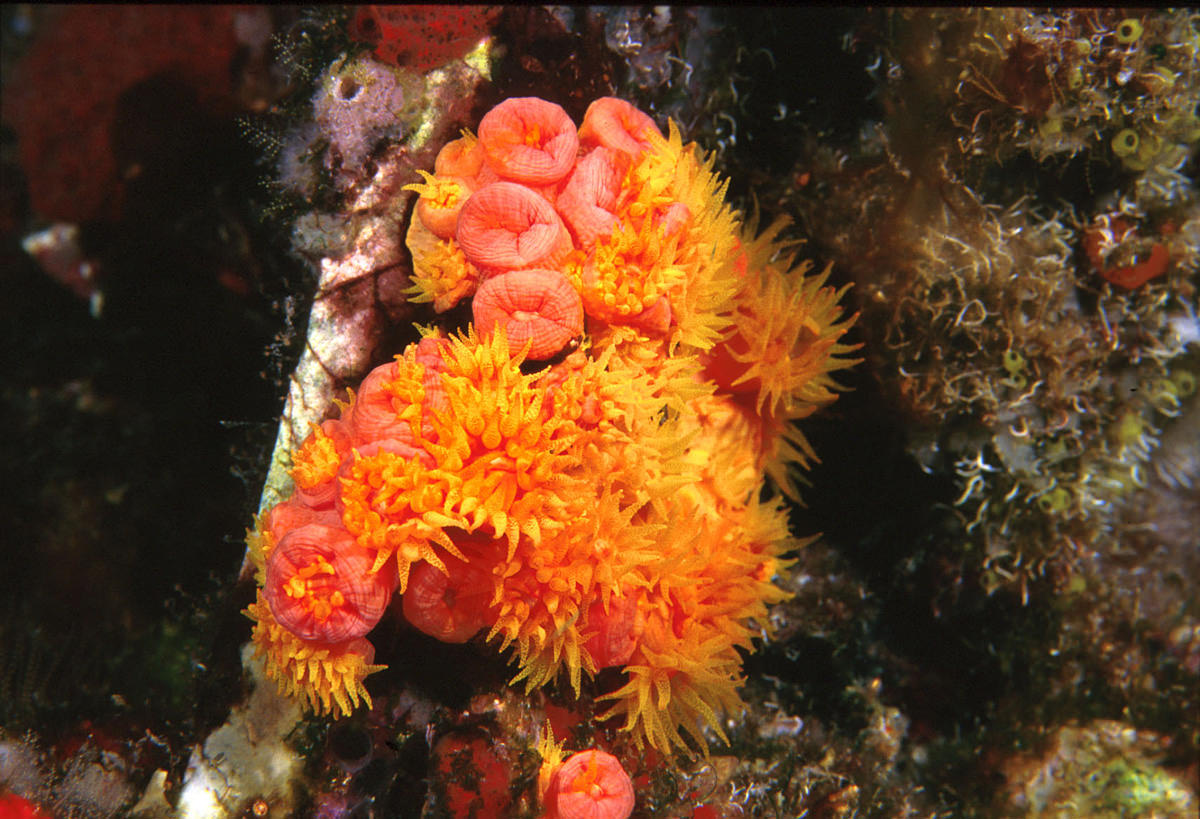Invasive Species
Flower Garden Banks

Why is it a concern?
Lionfish, originally native to the Indo-Pacific, are an invasive species within Flower Garden Banks National Marine Sanctuary (FGBNMS). After the introduction of lionfish into the Western Atlantic in the late 1980’s, they entered the Gulf of Mexico in 2009. In the fall of 2010, lionfish were observed in the northwestern Gulf at Sonnier Bank and nearby oil and gas platforms. Finally, in July of 2011, they were observed on all three banks of FGBNMS.
Sanctuary researchers have documented the appearance and rapid spread of lionfishes in the sanctuary, as well as surrounding banks in the northwestern Gulf of Mexico. Between 2011 and 2012, lionfish sightings increased ten-fold, and continue to increase at a high rate. While fish biomass at FGBNMS remains high, the invasion is still in the early stages, and negative impacts on the reef community may not be seen for several years.
FGBNMS has made efforts to remove lionfish, but more information is needed to control the population and to understand control targets and other effective control mechanisms that would minimize ecosystem-level impacts. The Office of National Marine Sanctuaries released a Lionfish Response Plan to identify critical actions needed to minimize the impact of this unprecedented marine invasion. In addition to documenting distribution and abundance changes, researchers at FGBNMS are studying lionfish diet through stomach content analysis and providing data and samples to partners for studies on age/growth, genetics, ciguatera, and contaminants (mercury).
FGBNMS has made efforts to remove lionfish, but more information is needed to control the population and to understand control targets and other effective control mechanisms that would minimize ecosystem-level impacts. In addition to documenting distribution and abundance changes, researchers are studying lionfish diet through stomach content analysis and providing data and samples to partners for studies on age/growth, genetics, ciguatera, and contaminants (mercury).
In addition FGBNMS has also been invaded by the orange cup coral Tubastraea coccinea and Tubastraea sp. Though found in high abundance on regional oil and gas platforms, some colonies have also been found on the natural bottom of the all three banks within the sanctuary. Over 200 colonies were removed from one focused location on West Flower Garden Bank in 2012. By 2014, their numbers in that one location had returned, or even increased. Theimpacts of Tubastraea are not yet apparent.
Overview of Research
The Flower Garden Banks National Marine Sanctuary is actively seeking research partners to conduct work connected to Invasive Species as a sentinel issue.
| Project Name | PI and contacts | Links |
|---|---|---|
East and West Flower Garden Banks Long-Term Monitoring |
Flower Garden Banks NMS, Bureau of Ocean Energy Management |
|
Invasive Species Monitoring and Sample Dissemination |
Flower Garden Banks NMS |
|
Lionfish Monitoring and Research |
Dr. Michelle Johnston, FGBNMS |
http://flowergarden.noaa.gov/education/invasivelionfish.html http://coastalscience.noaa.gov/research/pollution/invasive/lionfis http://sanctuaries.noaa.gov/science/conservation/lionfish15.html |
Science Needs and Questions
- How is the lionfish population changing over time in the FGBNMS?
- What locations (depths, habitat types, banks) are colonized or recolonized most quickly by invasive lionfish?
- How are different habitats utilized by lionfish, and what levels of movement do they exhibit between habitats?
- How effective is removal in controlling lionfish and how are native fish populations responding?
- How much effort is required to control lionfish in the FGBNMS, and is this effort sustainable?
- Are ecologically “intact” communities like the Flower Gardens more resistant to the lionfish invasion?
- What is the level of risk associated with ciguatera in relation to lionfish and does it differ from that associated with other fish?
- What is the ecological role of small crustaceans populations on the reef? How will the balance be affected if they are eradicated by the lionfish?
- Development of a method for attraction and removal of lionfish at depths below conventional scuba diving.
Education and Outreach Material
The sanctuary is actively involved with partners, both in the region and at a national level (including schools, clubs, zoos, aquaria, universities, Reef Environmental Education Foundation, and others), to provide training and handling workshops, attend special events, develop and disseminate outreach materials, and even collect live fish for exhibits.
Time lapse animation of lionfish expansion since 1985
Red Lionfish Poster (86.4MB pdf)
- A poster from The Nature Conservancy and its partners focusing on the threats posed by this invasive species in the Caribbean and Gulf of Mexico.

References
Aguilar-Perera A. and Tuz-Sulub A. 2010. Non-native, invasive red lionfish (Pterois volitans [Linnaeus, 1758]: Scorpaenidae), is first recorded in the southern Gulf of Mexico, off the northern Yucatan Peninsula, Mexico. Aquatic Invasions. Vol 5: S9–S12 pp.
Fenner, D. and K. Banks. 2004. Orange cup coral Tubastraea coccinea invades Florida and the Flower Garden Banks, Northwestern Gulf of Mexico. Coral Reefs 23:505-507.
Johnston, M.A., Gittings, S.R., and Morris, J.A., Jr. 2015. NOAA National Marine Sanctuaries Lionfish Response Plan (2015-2018): Responding, Controlling, and Adapting to an Active Marine Invasion. Marine Sanctuaries Conservation Series ONMS-15-01. U.S. Department of Commerce, National Oceanic and Atmospheric Administration, Office of National Marine Sanctuaries, Silver Spring, MD. 55 pp.
Nuttall, M.F., Johnston, M.A., Eckert, R.J., Embesi, J.A., Hickerson, E.L., and Schmahl, G.P. (in press) Lionfish (Pterois volitans/miles) Records Within Mesophotic Depth Ranges on Natural Banks in the Northwestern Gulf of Mexico. BioInvasions Records. 2014
Precht, W.F., Hickerson, E.L., Schmahl, G.P., and Aronson, R.B. (In Press) The Invasive Coral Tubastraea coccinea (Lesson, 1829): Implications for Natural Habitats in the Gulf of Mexico and the Florida Keys. Gulf of Mexico Science. 2014

